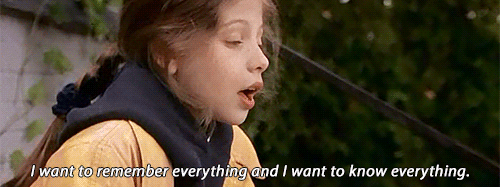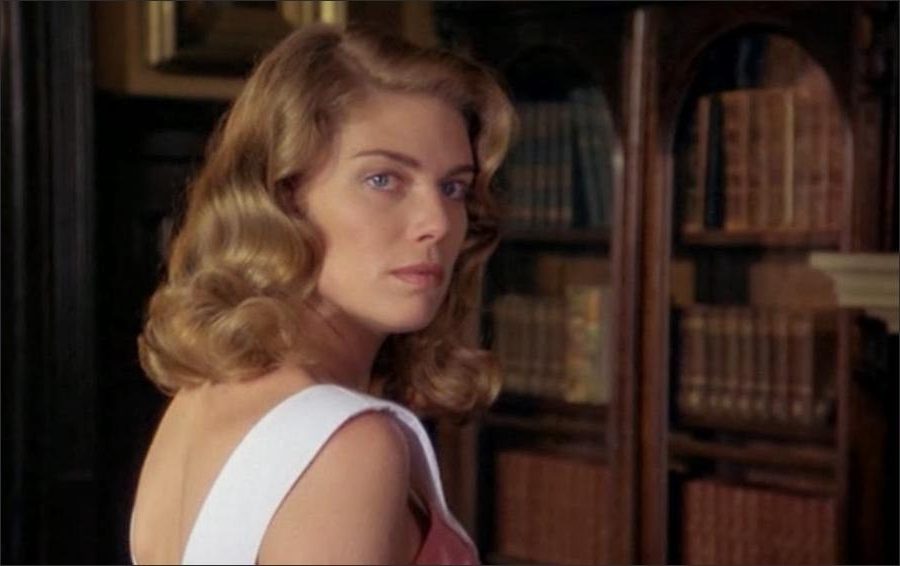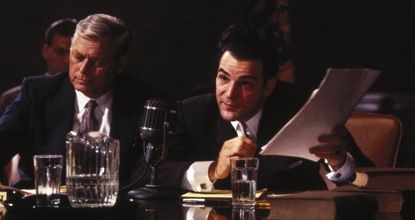"I want to learn everything I can and write down everything I see. If I want to be a writer someday I better start now, and that is why I am a spy" so says would be writer and full time spy Harriet. 1996's Harriet the Spy follows the adventures of its young heroine as she pursues her dream of becoming a writer and finds herself along the way. Every bit as feisty as its protagonist, the film presents an unflinching portrayal of the pain of growing up and the joys of discovering who you are and who you want to be. Join Harriet for a tale of the betrayals, intrigues, friendships, and lessons that define adolescence in Harriet the Spy.
The story follows precocious eleven year old Harriet Welsch over the course of a tumultuous school year. Aspiring writer and self-professed 'spy' Harriet spends her days watching the eccentrics who populate her neighborhood and writing down her observations. With her parents engrossed in their careers and social lives she finds solace in the encouragement of her devoted nanny, Golly. After a misunderstanding leads to her parents firing Golly, Harriet enters a deep depression and retreats into her writing. When bully Marion discovers Harriet's notebook the young spy's brutally blunt observations are shared with their entire class. Separated from Golly and outcast at school she begins lashing out, leading her parents to ban her from writing. Just when she is certain that there is nowhere she can turn, however, she finds the inspiration to use her writing to "put beauty in this world" and learns valuable lessons about friendship, forgiveness, and the importance of giving people a second look.
Harriet the Spy brilliantly brings one of the most iconic characters in children's literature to life in all of her inspiring and infuriating glory. The film relates its tale from Harriet's viewpoint, allowing viewers to see the world through the at once innocent and brutal eyes of a child on the verge of adolescence. As a result, the film refuses to speak down to young viewers and offers a refreshingly honest depiction of childhood that is rarely seen in family entertainment. The film follows Harriet through a series of misadventures in which she faces bullying from her classmates, and a lack of understanding from the adults in her life. Even as she finds herself outcast both at school and at home, however, the greatest struggle that she endures is the one within herself. Through its depiction of her efforts to come to terms with the person she is and attempts to become the person she wants to be the film offers a coming of age tale that is equally inspiring and relatable. Even as it maintains a firm focus upon its quirky heroine the film offers a colorful cast of engaging characters who highlight Golly's lesson that "there are as many ways to live in this world as their are people in this world and each one deserves a closer look". Gear up for an unforgettable adventure into adolescence and espionage with Harriet the Spy.
The film brings the characters from Louise Fitzhugh's 1964 classic novel to brilliant life thanks to the work of its cast. J. Smith Cameron and Robert Joy aptly portray the journey of Violetta and Ben Welsch from absent adults to involved parents. Vanessa Lee Chester is an eccentric delight as Harriet's aspiring scientist friend, Janie. Gregory Smith portrays Harriet's struggling friend, Sport, with a subtlety and skill that belies his years. Charlotte Sullivan earns her place amongst cinema's greatest mean girls as Marion. Rosie O'Donnell steals each scene in which she appears in her inspiring turn as Golly. Even in the midst of excellent supporting performances the film belongs to Michelle Trachtenberg in a performance that balances vulnerability, bravado, and pathos as the indomitable Harriet.
This portrait of the artist as a young spy is certain to delight young viewers and the young at heart. The film's intelligent script maintains the wit of the original novel while adding a dose of '90's attitude. The endearing performances bring each of the colorful characters to vibrant life. At once a tribute to childhood and a chronicle of the pain of growing up this film serves as an apt ode to the adventures of adolescence. For intrigue that the whole family can enjoy grab your binoculars and hit the spy route with Harriet the Spy.





